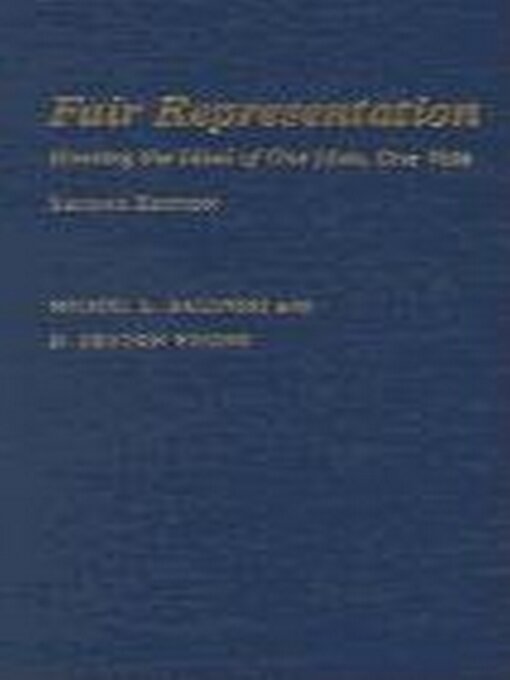The issue of fair representation will take center stage as U.S. congressional districts are reapportioned based on the 2000 Census. Using U.S. history as a guide, the authors develop a theory of fair representation that establishes various principles for translating state populations—or vote totals of parties—into a fair allocation of congressional seats. They conclude that the current apportionment formula cheats the larger states in favor of the smaller, contrary to the intentions of the founding fathers and compromising the Supreme Court's "one man, one vote" rulings. Balinski and Young interweave the theoretical development with a rich historical account of controversies over representation, and show how many of these principles grew out of political contests in the course of United States history. The result is a work that is at once history, politics, and popular science. The book—updated with data from the 1980 and 1990 Census counts—vividly demonstrates that apportionment deals with the very substance of political power.
- Onyx Storm Read- Alikes
- Staff Reads
- In Memoriam 2024
- Cook Up Something Cozy
- Short 'n' Sweet
- Bans off Our Books
- Yo Ho Ho, a Pirate's Life for Me
- Farm to Table
- As If: Modern Books Featuring 80s and 90s Nostalgia
- Wilderness Women
- In My Libby Era: Books for Swifties
- Cowboys and Country Music
- Literary Longlists
- See all ebooks collections
- Full Cast Audiobooks
- Available now Audiobooks
- Just Added Audiobooks
- Pacific Northwest Authors & Settings
- Agatha Christie and Friends
- Books about Books
- Quick Stories
- Uplifting Listens
- Good Enough to Eat
- All You Have to Do Is Call
- Listen to the Great Outdoors
- American History
- Queerly Beloved
- See all audiobooks collections
- News & Politics
- Celebrity
- Health & Fitness
- Food & Wine
- Fashion
- Tech & Gaming
- Business & Finance
- Revistas
- Cars & Motorcycles
- Home & Garden
- See all magazines collections
